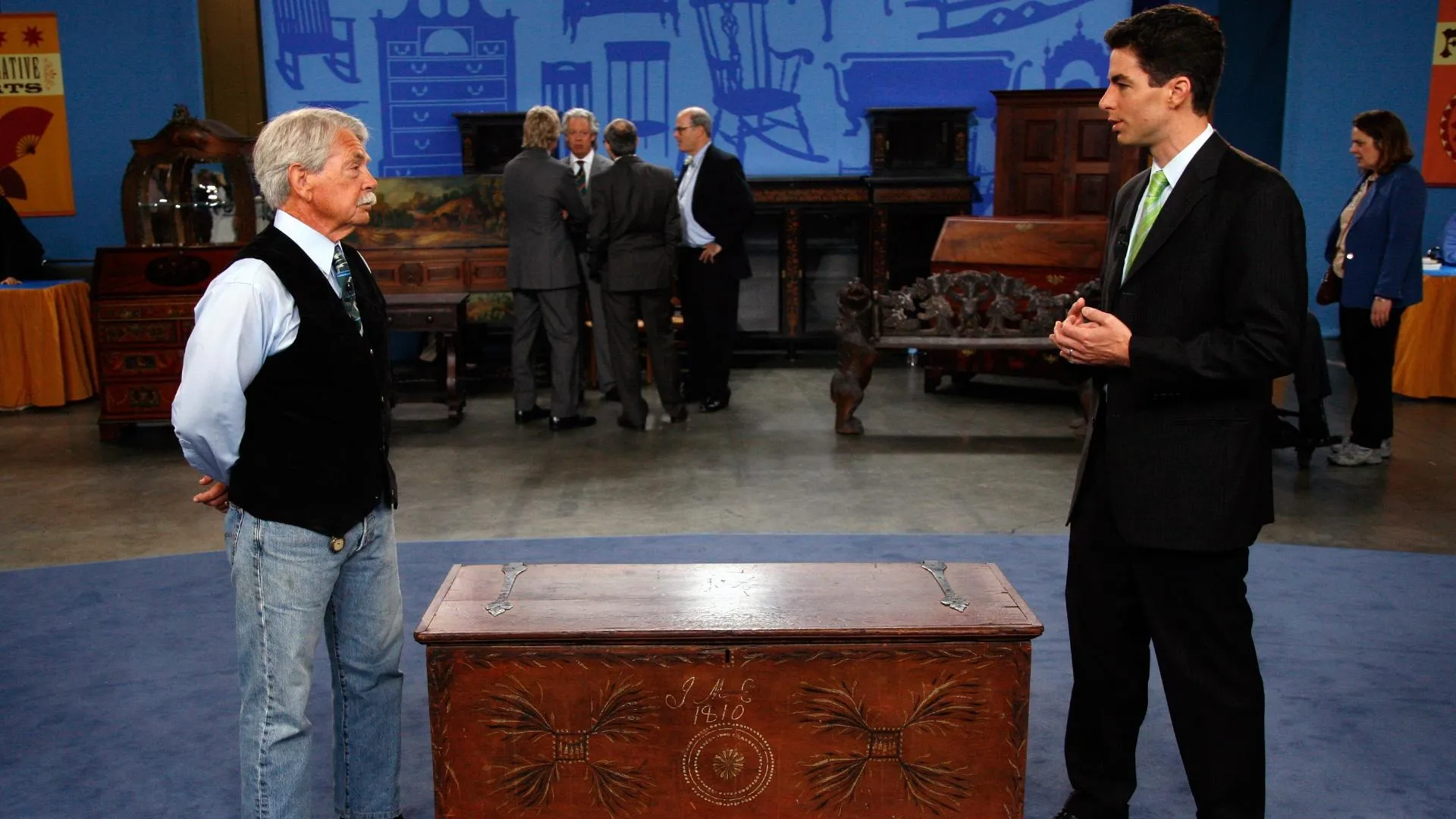GUEST: Well, this was given to us by a dear friend in Massachusetts back in, uh, 1963. She was one of the founders of Old Sturbridge Village in Massachusetts, and said that this piece was too old for the focus period of the village, and asked if we would like to have it.
APPRAISER: Wonderful. Well, this piece is a bit of a puzzle, and everyone on the furniture team and the folk art team looked at it, and we had great fun trying to look for the clues that would tell us where this piece was made. It is beautifully painted. You referred to it as just an old chest. It's a pretty wonderful old chest. For one thing, we know when it was made. It says right on the front-- 1810, which is important to valuing it and placing it in context. This piece is constructed of poplar throughout, but the till inside is yellow pine. Those woods typically turn up in the Mid-Atlantic states. Those are not really New England woods. Now, Pennsylvania is the land of the painted chest. The Germanic and continental immigrants into Pennsylvania brought with them that tradition of the painted chest and painted dower chests.
GUEST: Mm-hmm.
APPRAISER: So, lots of these that turn up are Pennsylvania. But this one doesn't really conform to that. For one thing, on a Pennsylvania chest, typically, you would have big wrought strap hinges that would come up here. This originally had just a very small tine hinge here, and you can see where it's been patched where those broke out. Right. Not the typical thing for a Pennsylvania chest. The other thing is the paint decoration, which really is the heart of the piece here. From a market perspective and from a visual point of view, it's all about the paint. And the market right now for painted things is very strong, because you have both folk art buyers and furniture buyers interested in this. The initials on the front and the 1810 date give us more clues. The paint scheme around the piece, also not typical of Pennsylvania. Surprisingly, the piece is not dovetailed. This is a rural piece. This is not something that was made by a shop that was producing lots and lots of these, because typically, those are dovetailed. And, in my opinion, it's made in New York, uh, rather than Pennsylvania or Massachusetts.
GUEST: Hmm.
APPRAISER: However, perhaps it's even further south. So, the most important thing about this piece or about valuating something is not the condition or the paint or the rarity. It's who wants it. And the market right now is really driven by regions, so as a New York chest, um, this piece at auction, I think, is about $8,000 to $12,000.
GUEST: Mm-hmm.
APPRAISER: If you were able to say with certainty that it had come from further south-- Virginia or Tennessee-- it might be worth three times that, because of the
GUEST: I see.



